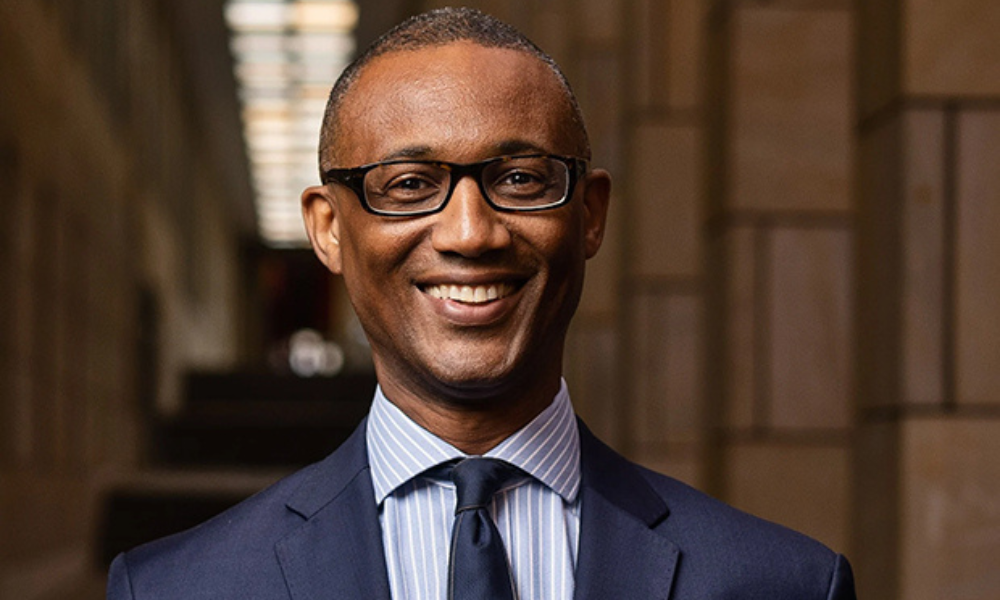Focus on how clients perceive your competence and benevolence instead

While many advisors may believe that “trust takes years to build, but can be destroyed in seconds”, one specialist in behavioural economics says it’s not true.
“In all the research that we did, we found absolutely no evidence for this whatsoever,” Herman Brodie, founding director of Prospecta Limited and a lecturer with the Edinburgh Business School at Heriot-Watt University in Scotland, recently told the Investments and Wealth Forum. “Trust isn’t even something to be built and destroyed.”
Brodie, author of The Trust Mandate: The behavioural science behind how asset managers REALLY win and keep clients, trains decision-makers. He was sharing his research on “The Trust Mandate”.
He delved into why clients select the asset managers they do in order to share what drives their selection and retention decisions. He noted soft factors can be eight times more of a factor than managers’ past performance. Clients can also use soft factors to judge the manger’s benevolent intentions, which are one of the two dimensions in human evaluation that Brodie said are more commonly known as ‘trust’. The other dimension is the perception of competence.
Brodie said the perception of competence can take a long time to build because it’s based on a series of observations of the manager’s track record or the client’s observations that the manager has delivered a good outcome, so the client expects another.
If there’s a poor result, he said, “perception is not completely destroyed. Sometimes, even the most competent people can’t achieve a good outcome every single time. But, if there’s another poor outcome, then another and another, they might come to the conclusion that the manager isn’t competent. Competent perceptions take a long time to build, but they also take a long time to destroy.”
Advisors can build benevolent perception by showing they are prepared to bring their organization’s full resources to help them reach their goals, avoid obstacles, or mitigate risks. They can also they provide clients with education, which Brodie said is better than giving “stuff” away.
“The simple fact that you have identified a risk for that client and proposed a solution is already a demonstration of care,” he added. “The willingness to educate them also is evidence that you are more concerned with their outcomes than you are about selling additional products.”
Read More: How advisors can reduce the influence of 'finfluencers' on clients | Wealth Professional
That education factor also demonstrates advisors’ competence as well as concern with clients’ success.
Finding, and working with, where the advisors and clients’ shared values - whether they be social, cultural, sport, spiritual, or ecological – overlap can also help to build that benevolent perception.
“Your communication becomes much more effective if you start from a point where the client already is, and that’s a point you share,” said Brodie.
Read More: How can you help clients better understand their ESG fit? | Wealth Professional
Benevolent perceptions can emerge from the first contact. Within a second, clients conclude that the advisor has his or her back. But, advisors can destroy that if they put their selfish interests first.
“Benevolent perceptions take seconds to read, but only seconds to destroy,” said Brodie. ”So, when you say that trust has been lost, it’s very important to be able to describe which trust has been lost, especially if you want to be able to rebuild it.”
When that happens, Brodie encouraged advisors to look at the client’s perception and feeling about the breach of trust. If the client is disappointed, then the competence perception has been damaged. The advisor must invest in recruitment, staff training, and support to produce additional good outcomes. Ten, the competence perception can likely be rebuilt.
But, if there’s a breach of benevolence perception, clients may feel betrayed.
“There’s a danger that can never be rebuilt,” he said. “If advisors want to try, they’ll need to get ride of the person responsible for the betrayal. Some heads are going to have to roll. The advisors will also need to make a sincere apology.”
“Clients are always going to evaluate your intentions as well as your skills,” said Brodie. “You need to be able to give them the information to allow them to make that judgment. I wouldn’t be shy about giving people the information necessary for them to evaluate your skills. You must also be similarly forthcoming in giving them the information that will allow them to evaluate your benevolent intentions. If you don’t, they will still make that judgment anyway, but they’ll just do it without you – and with the danger that they could make the wrong judgment.
“A high-trust relationship benefits both client and advisor. It’s genuinely a win-win situation.”



